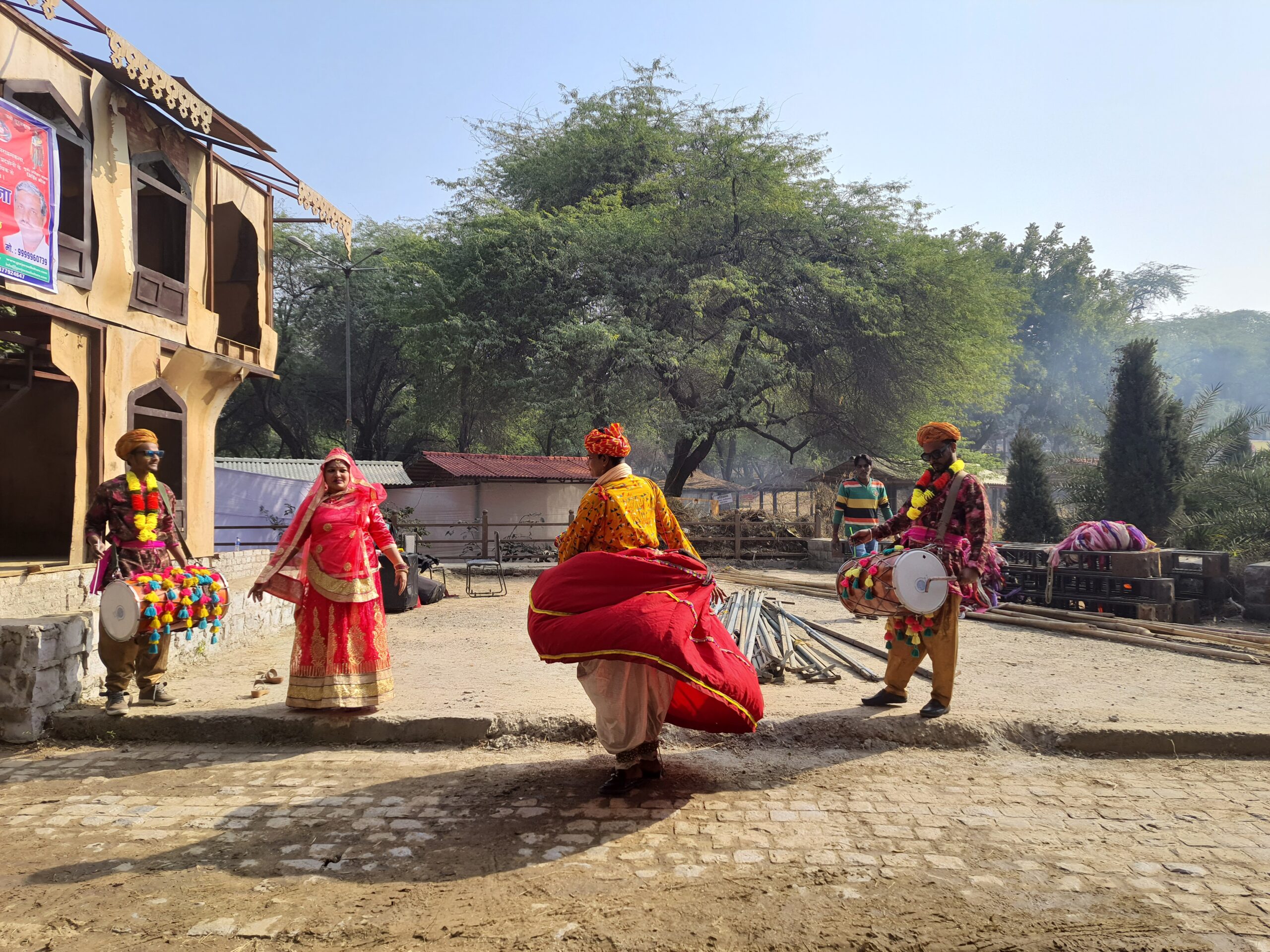Bringing Gurjar community together with Gurjar Mahotsav

Gurjar Mahotsav, two-day festival was organised in Faridabad by the Gurjar Art & Culture Trust (Photo: Mohsina Malik)
Located in the southern fringe of Delhi, Surajkund is a huge fairground best known as host of the annual handicrafts fair, Surajkund Mela that attracts thousands of artisans from all over India for a fortnight-long fair each February.
However, last week, the ground saw a different kind of Mela or Festival as it attracted thousands of Gurjars, a community that traditionally has been in animal rearing and which is spread across many states in the country.
Gurjar Mahotsav was mounted to showcase the Gurjar culture, cuisine, music and lifestyle to the wider society, while also bringing together members of the community from all over India in order to create a network within the community and to forge unity amongst Gurjars across India.
‘‘The main aim of the festival was to connect people of the Gurjar community and see the status and economic growth of the community all these years across different states and know about each other and look for better moments that will help us grow and get rid of misconceptions that people have about our community being rude and illiterate,’’ Sunil Choudhary, a 29-year-old student from Noida near Delhi, who is a volunteer for Gurjar Art & Culture Trust tells Media India Group.
‘‘Also, it is good to see that the festival highlights our history which the new generation is unaware of and needs to know how our ancestors were living in the past,’’ adds Choudhary.
Numbering anywhere between 15-25 million and living in as many as 15 states all across India, the Gurjars say they have been maltreated by the wider society due to various misconceptions and falsehoods that have been spread about them for decades, if not centuries.
‘‘In the Indian society, we have always been targets of very derogatory and casteist remarks,’’ says Choudhary, whose sentiments are echoed by several other Gurjars present at the fair.
Nirmaan Soharwardi is a retired government employee from Chamba district of Himachal Pradesh. He, too, feels that the community has been wronged against and calls for fairs like Gurjar Mahotsav to be held. “These kind of festivals are more important because it helps a community to tell about themselves and change the narrative set by the society towards them. Talking about my community, we have been labelled as criminals. Why criminals? Because during the British rule, our community revolted against their tyranny and fought for our rights. Since then the British listed some communities in the country as criminal communities and we were added to that list. Since then we have been seen as criminals, but for no reason,’’ Soharwardi tells Media India Group.
Neetu Gojri, a businesswoman from Faridabad, also speaks of the ill-treatment. “I come from the Gurjar community and we have been portrayed in a bad light all these years and are told we have ill-gotten wealth. But I am a businessperson and I come from a very poor family. I have achieved what I am right now by hard work not because of any ill-gotten wealth,’’ Gojri says.
“There is this notion among people that we are backward and have no sense of living as a community. This kind of narrative among people has never changed as our history has never been highlighted and neither our issues,” Gojri adds.
The Gurjars say that they continue to face discrimination at the hands of their neighbours and other members of the society even today. “Even though I have been facing discrimination by my classmates since my school days, I have never allowed them to overpower me because of my identity and the stereotype they have built,’’ says Mohit Bassi, a college-going student from Noida.
“We have always been deprived of our rights, whether it is jobs or education and we have been pushed to the wall,” Bassi adds.
But the Gurjars were glad about the initiative of hosting Gurjar Mahotsav saying it was an event where they could display their culture and history.
“I feel bad in today’s time we are still looking for recognition in the society and making others understand about what we really are and what we stand for. May be there have been a few bad elements amongst Gurjars, too. But why generalise? Holding an entire community accountable for the acts of a handful is unacceptable,” says Maheshwarlal Chaprana, a 55-year-old worker from Ajnala in Punjab.
The Gurjar Mahotsav saw dozens of stalls with various wares – from handicrafts, handloom, jewellery and cuisine – tempting the visitors, whether Gurjars or not. Right from the morning, the visitors, including Gurjars dressed in colourful and traditional attires, were welcomed by musical groups at the entrance to the fairground that had been decked up with flags. Throughout the spacious ground, a number of dais had been erected for holding dance or music performances, representing the various states that were represented by the Gurjars. Each state also prominently displayed its culinary prowess through the food-vending stalls set up at the fairground.
The festival was inaugurated by Minister of Culture & Tourism of government of Haryana Kanwar Pal Singh and it featured musical performances by various groups from different states of India.
Around 13 states participated in the festival that concluded with the message that people from any community do not have to forget their tradition and culture and has to prosper in their lives.









